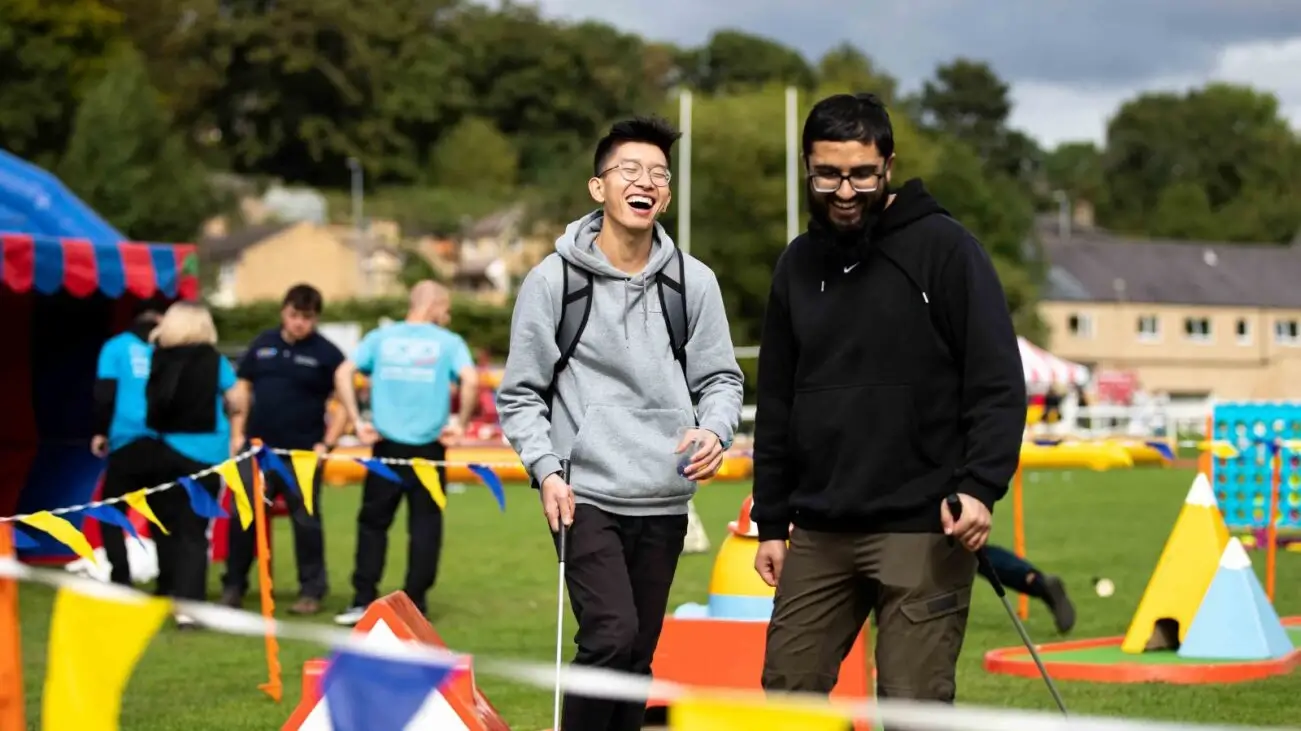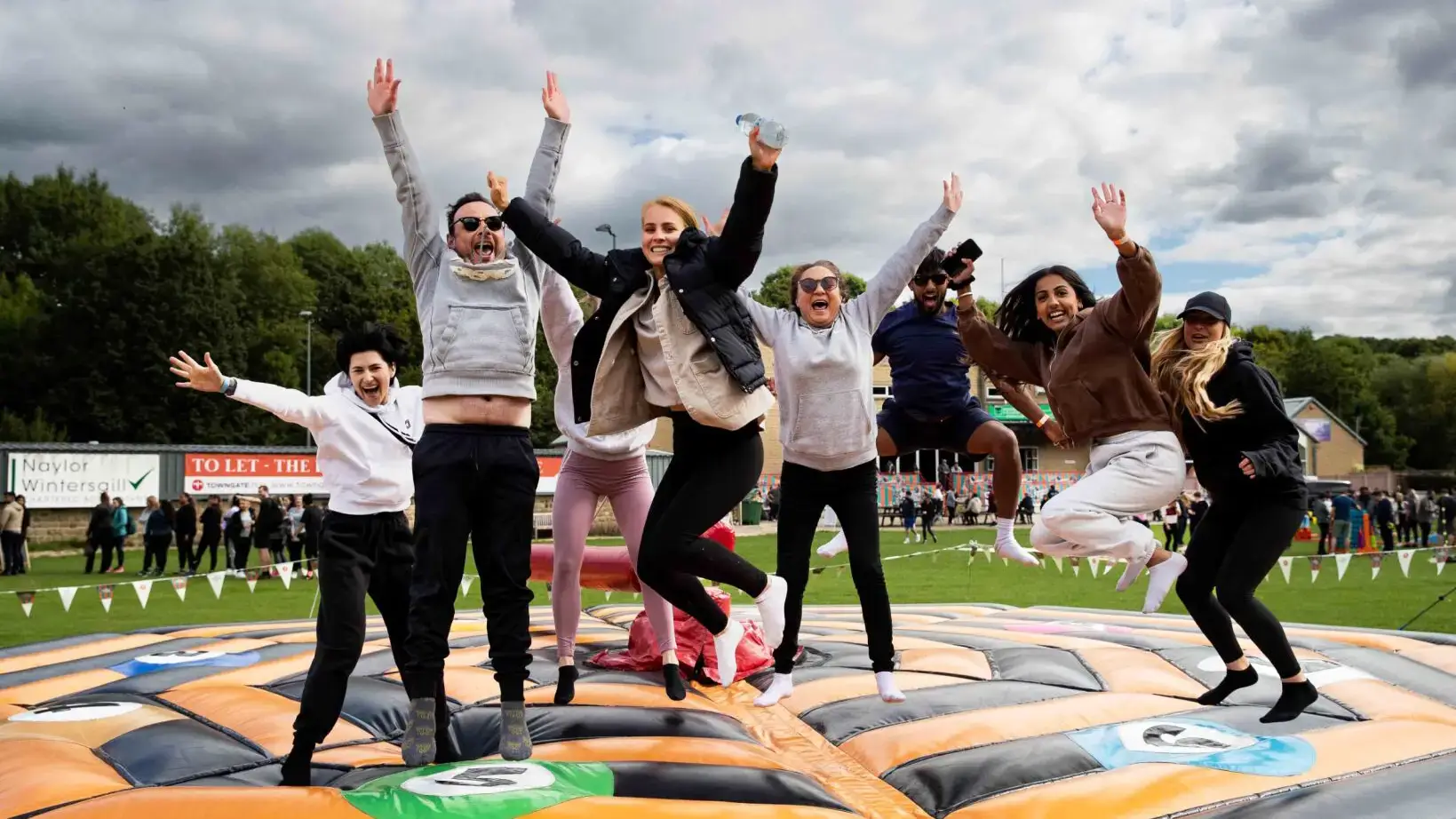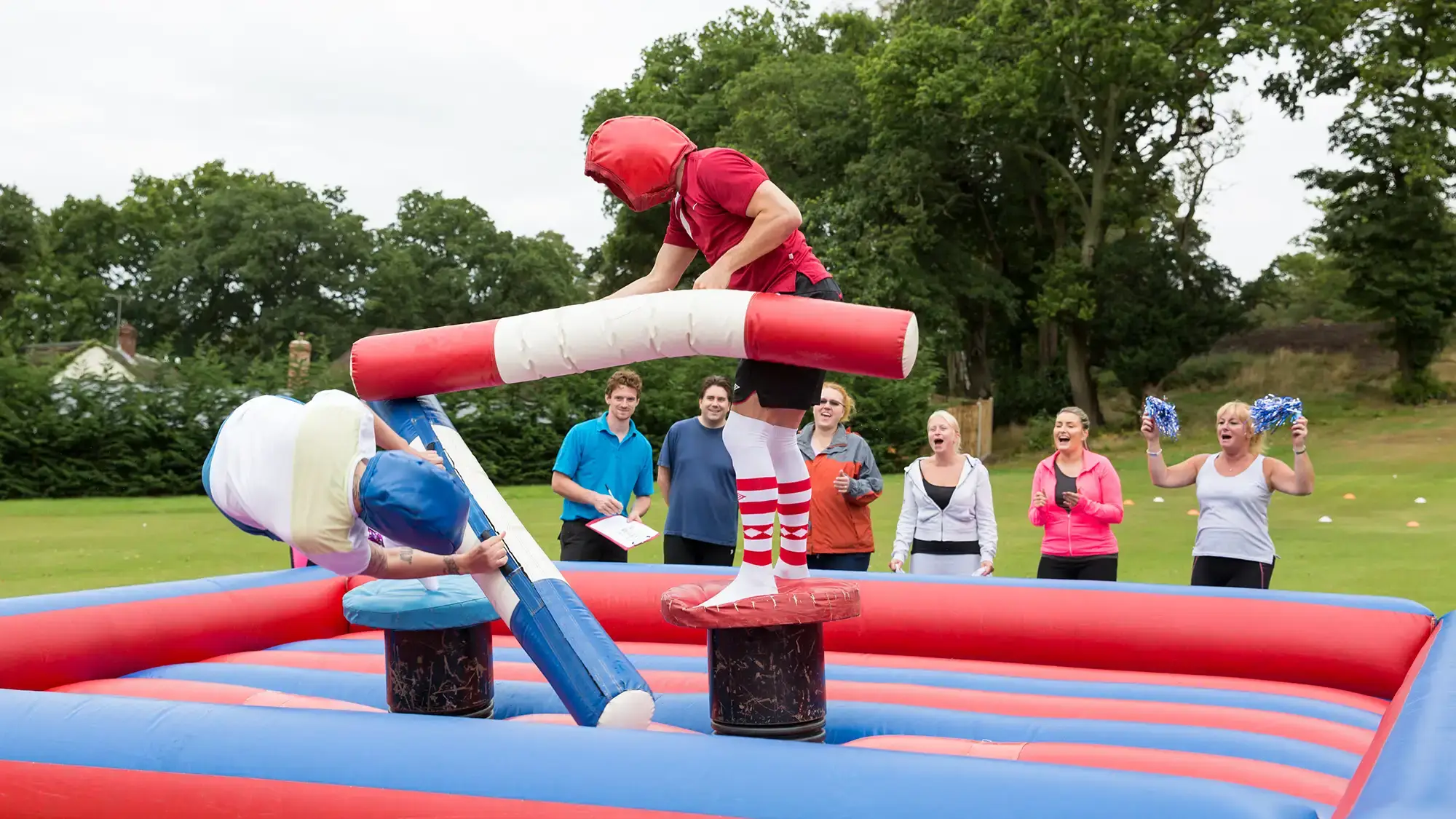Whether you’re a long-standing manager with years of experience or a new manager navigating the leadership terrain, organising team building activities for your team can be a strategic aspect of your leadership toolkit.
This article provides 13 practical team building tips for managers and leaders to help foster stronger connections among employees in your next team building activity or event.
Tip 1: Set clear goals so you can measure the success of your team building activity
As a manager or team leader, setting clear goals will allow you to evaluate the effectiveness and success of the team building activity. You can set quantitative or qualitative goals and use these as a benchmark to track, report and demonstrate the business impact of team building activities. Setting and reporting on goals can also be used to guide future team building efforts.
Here are some examples of team building goals and how to measure them:
- Rate of participation and enthusiasm during the team building event through manager observation.
- Percentage increase in employee trust and skill development through an anonymous survey administered after the team building event.
- Qualitative feedback from employees regarding strengthened relationships and new skills learnt.
- Increased productivity in future team projects measured through project delivery effectiveness and efficiency metrics.
- Decrease in conflicts between employees over a defined period.
Tip 2: Think outside the box when choosing the team building activity
When choosing the team building activity, go with an event that your team won’t forget. Avoid picking an event closely linked to your company. Stepping outside routine fosters memorable interactions, encourages deeper conversations, builds empathy between colleagues and promotes work-life balance.
Even a team building activity that seems unrelated to the daily work can be highly relevant to your team, encouraging people to think critically while working together and building trust while overcoming novel situations in ways that endure after the event. Unique team building activities such as games, challenges or adventures will ultimately spark innovation and connectivity back on the job.
Here are some team building ideas for unforgettable team experiences:
- Under Pressure team building game where employees compete in teams to win a set of entertaining and nail-baiting challenges.
- The Crystal Team Challenge team building event gets your team out of their comfort zone with 8 hands-on activities and a final round taking place in an inflatable Dome.
- Putt for Purpose team building event brings a charitable twist to mini golf where teams have to get creative to bring the golf course to life.
- Masterpiece team building activity brings the whole team together while collaborating to create a giant painting.
Tip 3: Get everyone involved when choosing the team building activity
Incorporating your team’s input when selecting team building activities can help generate more engagement. Ask your team what kind of activities they would enjoy participating in and make sure everyone has a say. This will help avoid having people on the sidelines during the activity and ultimately enhances the overall effectiveness of the team building experience.
By putting people first in the team building event planning process and asking for their preferences, you’re not just getting new ideas, you’re empowering your team. When managers and team leaders listen to their team and incorporate their insights, it shows commitment to collaboration, makes the whole process feel more inclusive, highlights the importance of each member and boosts the chances that everyone will jump on board.
Here are some ways you can get insight from your team before the team building event:
- Conduct surveys to gather preferences.
- Host brainstorming sessions for activity ideas.
- Create a voting system for activity choices.
- Encourage open communication through suggestion boxes.
- Consider diverse preferences and interests.
- Implement a rotation system for activity selection.
Tip 4: Choose a convenient time and location
Selecting a convenient time and location for your team building event will ensure that everyone can participate without hassle. Here are some things to consider:
- Choose a location that is easily accessible or arrange convenient transportation.
- However, do opt for a change of environment outside the office to create a refreshing atmosphere.
- Respect employees' personal time and schedule the team building event during working hours.
- Take into account holiday periods, upcoming deadlines and potentially understaffed departments.
By factoring in these elements, managers and team leaders demonstrate a thoughtful approach to team building, making it more likely for the entire team to engage in the experience without added stress or inconvenience.
Tip 5: Base your team building on a fun activity
A team building activity shouldn’t feel like more work! Base your team building on a fun activity, incorporating elements of gamification and playfulness. Making participants laugh creates an enjoyable and relaxed atmosphere where they will engage and contribute to the team effort. When an activity feels more like play than work, it not only boosts morale but also taps into the cognitive benefits of relaxation. Giving the brain a break will inspire your team to come up with innovative ideas and adopt fresh perspectives. A fun and light-hearted approach to team building will enhance team collaboration and create an environment where creativity thrives.
Here are some fun team building activities ideas:
- Master of the Tasks team building will have your team in stiches of laughter while completing a hilarious selection of challenges.
- Challenge 100 team building event will get everyone to join in the fun with a range of activities from sports to brain busters.
- Quid Games team building uses game elements and simulation to create an entertaining and immersive team experience.
- The Crystal Team Challenge tests both your mental and physical agility in an exciting and hilarious challenge.
- Soap Box Derby team building is a hilarious race where players have to design and build their own carts.
Tip 6: Provide some unstructured time during the team building event
In your team building schedule, incorporate breaks from planned activities. Allowing unstructured times during you team building event creates space for natural conversations between your employees. This fosters a relaxed and friendly environment and contributes to a more genuine and cohesive team dynamic.
By providing opportunities where team members can share thoughts about the event, exchange ideas or catch up on personal conversations, you help build relationships beyond the confines of structured tasks, strengthening the overall team bond and enhancing the social aspect of the team building activities.
Tip 7: Encourage collaboration between departments
A team building event can be a great opportunity for managers and team leaders to encourage collaboration between departments and individuals within the company who don’t typically work together. This will help break down departmental silos, bring together diverse perspectives and skills and will lead to a more innovative, interconnected and productive workplace.
To facilitate collaboration between departments, you can rotate team members across regular team building activities. As team members who don’t usually work in the same team collaborate during team building activities, they get to know each other better, developing stronger working relationships.
Tip 8: Observe team interactions during team building
During a team building activity, you should observe how participants interact with each other. By doing so, managers and team leaders can identify individual skills and communication styles and gain insights into the strengths and weaknesses of the team. Post-event, you can use this first-hand knowledge to identify latent talents, potential leaders and areas that may require improvement.
Observing how team members work together and how they respond to challenges within the team building activity, will reveal their adaptability and teamwork skills. Post-activity, you can conduct debrief sessions to discuss observations and collaboratively strategise ways to leverage strengths and address weaknesses in future initiatives. Ultimately, this continuous learning loop from team building activities contributes to the team’s growth and increased productivity.
Tip 9: Get involved in the team building activity alongside your team
As a manger or team leader, participating in the team building activity alongside your team sets a powerful example. By making team building a shared experience for both managers and team members, you demonstrate a commitment to teamwork and set a positive organisational culture.
This approach bridges hierarchical gaps, increasing organisational transparency and promoting open communication. By engaging in both professional and social aspects of team building, you become a relatable figure which helps build trust, strengthens interpersonal connections and establishes a sense of unity. Moreover, managers and leaders can use this opportunity to showcase their own teamwork skills, emphasising the team spirit ethos teams expect from their leaders.
Additionally, this creates a more inclusive environment, encouraging employees to express themselves freely around their superiors. This active participation communicates that team building is not just a work activity but a valued and enjoyable part of the organisational culture.
Tip 10: Capture photos and videos
Capturing photos and videos during the team building activity is a great way to immortalise the event. Share the materials with your team after the event to create momentum and remember and laugh about enjoyable moments. This will help you reinforce the positive impact of your team building initiative.
Beyond internal use, photos and videos from the team building event can also be utilised in external communications such as marketing and PR. You could post them on your company’s social media platforms to showcase the organisation’s vibrant culture, potentially attracting talent and clients. You can also incorporate such content into your website’s “About Us” section to humanise you company and give your visitors a glimpse into your fun and inclusive culture.
Tip 11: Ask for feedback post-event
Asking for feedback from your employees after a team building event provides valuable insights into the effectiveness of the activity. It can help to:
- Identify what aspects of the event were most beneficial, enjoyable or could be enhanced.
- Demonstrate a commitment to an open and inclusive work culture.
- Empower team members by giving them a voice in shaping their collective experiences.
- Uncover potential issues or challenges within the team, enabling leaders to address concerns promptly and proactively.
- Plan future team building activities.
Here are some methods you can gather feedback post-team building event:
- Anonymous surveys or feedback forms to allow participants to share their thoughts confidentially.
- Informal group discussions to encourage open dialogue and idea exchange.
- One-on-one conversations to cater to team members who may prefer a more private setting.
- Other channels such as email, virtual platforms or suggestion boxes.
Tip 12: Make team building a regular activity in your company
Making team building a regular practice within your company cultivates a culture of collaboration and unity. Consider holding a bigger team building event at least once a year as an opportunity for in-depth bonding among team members and something to look forward to every year.
Additionally, integrating shorter team building activities into the daily work routine, such as simple meeting energisers or fun Friday activities, contributes to a continuous positive atmosphere in the workplace. These bite-sized activities inject a dose of fun and relaxation into the work day, reduce stress and rejuvenate team spirits.
Incorporating team building into your company’s culture, with a mix of comprehensive team building events and short energisers, establishes a solid foundation for lasting team cohesion and enhanced overall performance. Here is a guide to help you plan a successful team building activity for your team.
Tip 13: Call in the professionals
Organising a unique and creative team building activity demands time and resources from managers and leaders. An alternative you should consider is partnering with a specialised events company. They can offer a range of exciting team building activities and can bring invaluable expertise and experience into team dynamics and event planning.
At GOTO Events, we offer over 100 team building activities and we can customise many of our events to fit your preferences and requirements. Our team building events package offers:
- Venue-finding service at no extra cost.
- Mobile event team and equipment that will travel to your venue, anywhere in the UK.
- Experienced and enthusiastic event management team who will be on-site for the duration of the event.
- All materials and equipment required by your chosen team building activity.
- Full team building activity execution from set-up to wrap-up.
To discuss your upcoming team building event and request a free, no-obligation proposal, get in touch with our team today.




